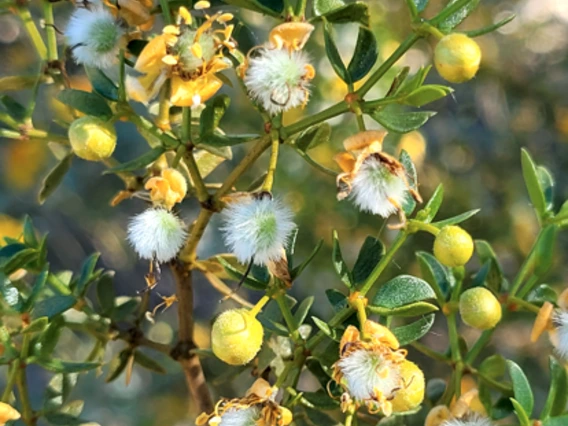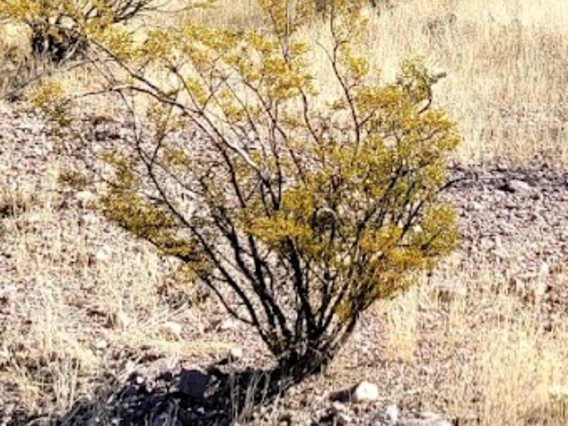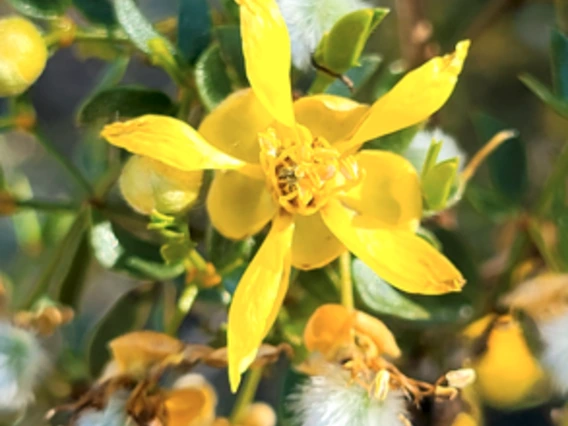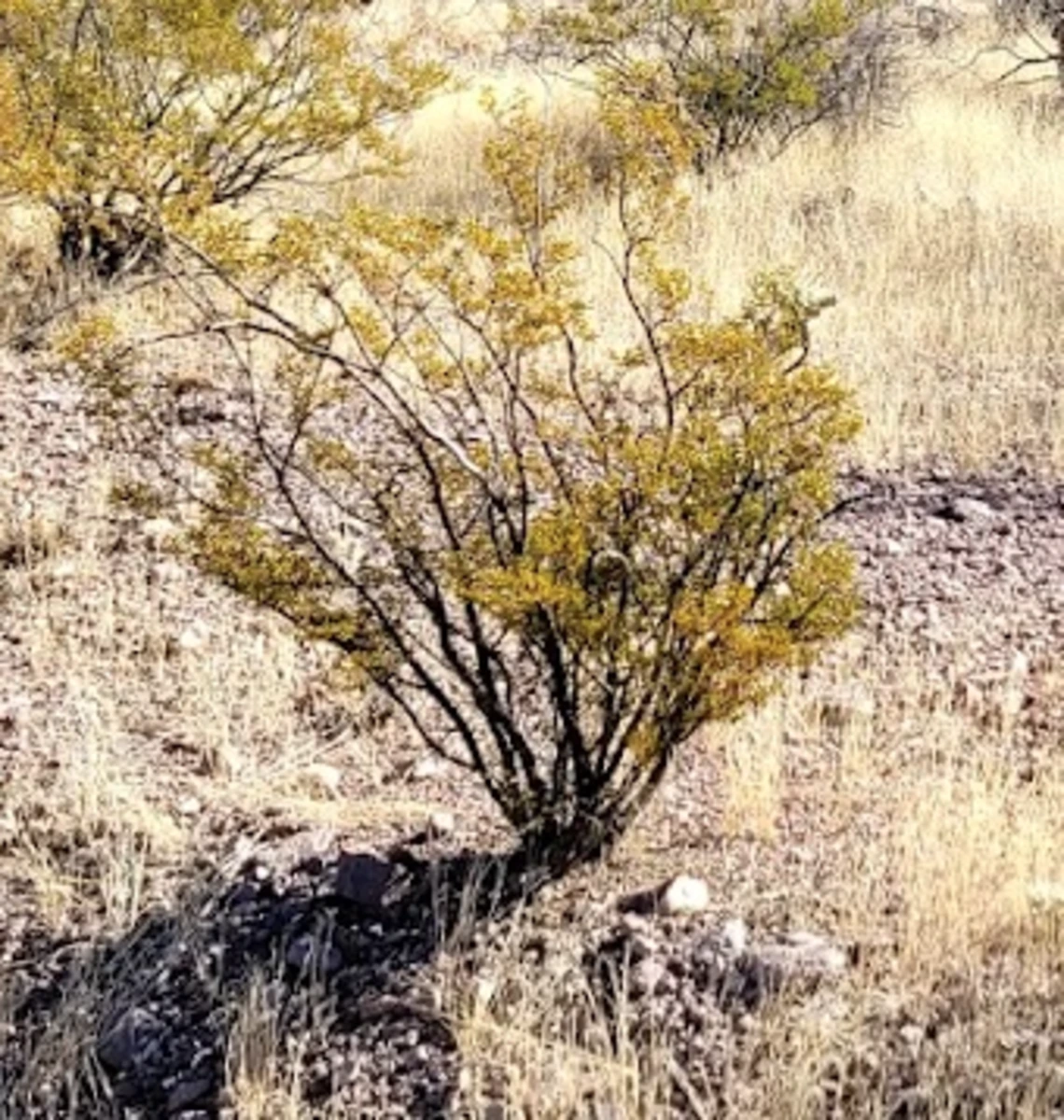Family: Zygophyllaceae
Compound: Lar tri
Synonyms: Larrea mexicana, Larrea divaricata subsp. tridentata
Geographic Origin: Southwestern US, South into Central MX
Characteristics: An evergreen perennial shrub with distinct grey branches, dark green leaves, and yellow flowers. It is branched and knotty, growing up to 3.5m (12ft). The bark is a light grey color, with darker, swollen nodes. A pair of leaflets attached at the base make up each leaf which have an opposite arrangement on the stem. When flattened, they have a vague crescent shape. Leaves are resinous and coated with natural oils that conserve water. During dry periods, creosote leaves fold in half to reduce exposure to the sun and turn a yellow-green color. After rainfall, leaves turn a darker shade of green and release an aroma that is often described as “the smell of rain” by locals. The plant produces bright yellow flowers in the spring and, if conditions are favorable, summer – fall. Flowers are yellow, solitary, and axillary with five petals. After pollination, they develop into white, fuzzy, ball-shaped fruit.
Natural History: Predominant in the Mojave, Sonoran and Chihuahuan desert regions where it inhabits flats, hills, and mesas. Found below 1676m (5,000ft) in elevation. This plant takes ~13 years to reach reproductive maturity and is known to produce satellite clones which sprout outwardly in a ring-like fashion from the root crown. Often, the original plant will die, leaving a ring of clones. The process repeats over thousands of years creating larger rings of genetically identical plants. The flowers are an important nectar source for pollinators and both the flowers and foliage are consumed by wildlife such as Dipsosaurus dorsalis (Desert Iguana)
Cultivation Notes: This is a highly drought tolerant shrub that grows best in calcareous, sandy, or alluvial soils. The shrub requires high soil oxygen and full sun exposure for growth, making it an excellent xeriscape ornamental that thrives with minimal amount of watering. The most effective method of propagation begins with drying the seeds, hulling, and finally applying scarification by boiling and soaking the seeds in hot water overnight. Seeds should be sown in well-drained soil. Allow potted plants to dry out between waterings. This plant reportedly does poorly in pots long term and is sensitive to root damage making in ground planting from seed or at a young age ideal.
For general plant propagation information, click here
Ethnobotany: This plant has some antimicrobial properties, and was used to alleviate allergies and arthritis. It also has mild sun blocking abilities when applied to skin. In modern landscaping this plant is favored for its toughness and visual appeal. It is also used in restoration projects within it’s native range.
Citations:
Warren, Jones and Sacamano, Charles. Landscape Plants for Dry Regions. Cambridge, MA. Fisher Books, 2000. Print.
Phillips, Steven J. and Comus, Patricia Wentworth. A Natural History of the Sonoran Desert. Tucson: Arizona-Sonora Desert Museum Press, 2000. Print.
Nabhan, Gary Paul. Gathering the Desert. Tucson: University of Arizona Press, 1985. Print.
SEINet Arizona – New Mexico Chapter. Retrieved July 1st, 2024.







